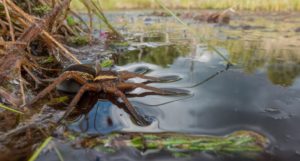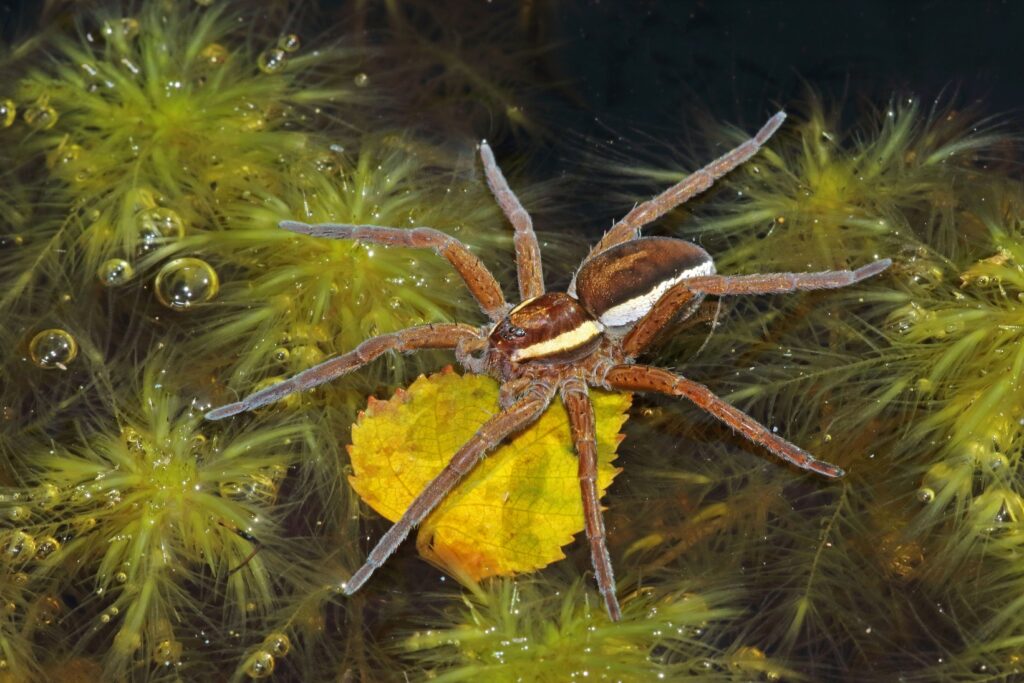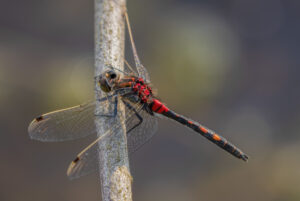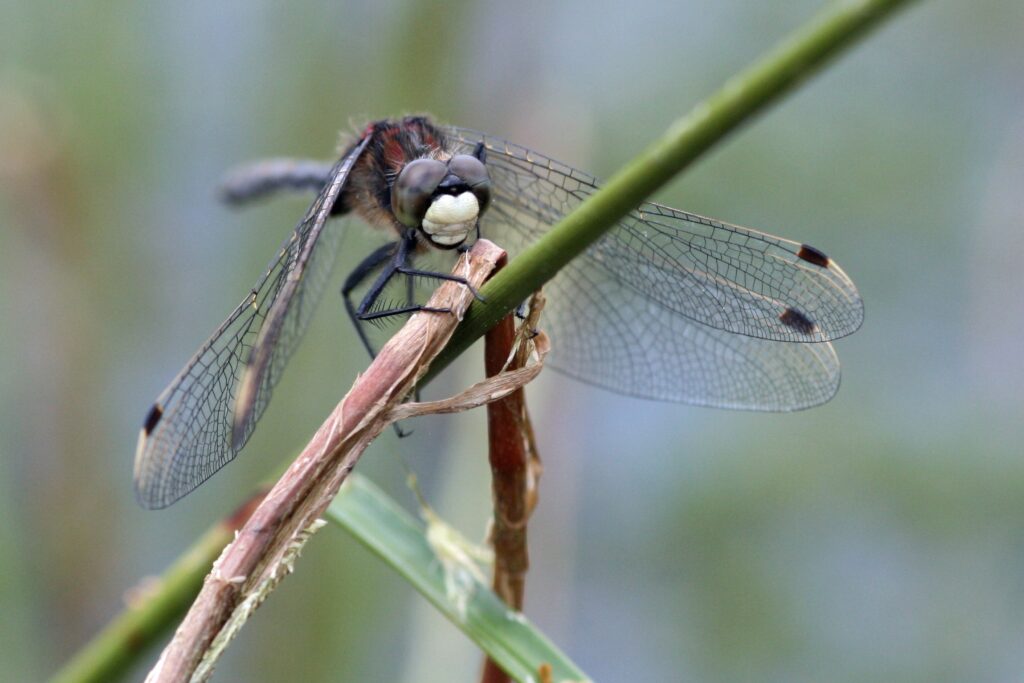Marches Mosses Celebrate UN World Wildlife Day
March 3, 2021
Note: Please be aware that links on this page take you to third party websites.
Today, March 3rd, is UN World Wildlife Day. It was established in 2013 by the United Nations General Assembly to be held on the anniversary of the 1973 signing of the Convention on International Trade in Endangered Species of Wild Fauna and Flora (CITES). The purpose of World Wildlife Day is to celebrate and raise awareness of the world’s wild animals and plants.
The Marches Mosses is an ecosystem that’s home to a wide range of fauna and flora that need the wet, acidic environment of the Mosses to thrive. Among them are the great raft spider and the white-faced darter dragonfly.

The great raft spider is a large wolf spider; it’s the size of the centre of the palm of an adult’s hand. Mid-brown in colour, raft spiders have pale yellow stripes along each side of their body. It looks like it walks on water, but it’s really using the surface tension of the water to support its weight. Raft spiders like to sit at the edge of one of the many pools on the Mosses, or on floating vegetation on the pool’s surface, with its front legs resting on the water’s surface. It feels for vibrations on the water as flying insects land and then jumps onto the unsuspecting insect for its lunch.
Raft spiders also swim underwater to locate food, eating aquatic insects like water beetles and even small fish and frogs. It dives underwater when threatened. You can spot them on the Mosses from May to August.

The scientific name for raft spiders is Dolomedes fimbriatus; they are part of the Pisauridae family of spiders. “Dolomedes” comes from the Greek word meaning “crafty” or “wily”, which is a good description of how raft spiders hunt!

Another denizen of the Mosses is the white-faced darter (Leucorrhinia dubia), one of the 26 species of dragonflies you can look for on the Mosses. The white-faced darter is special as it’s very rare, so rare that it’s on the GB Red List of endangered species. The male white-faced darter is red and black, while the female is yellow and black. Both have a creamy white face and a notably “hunchback” appearance.
White-faced darters are a true mire species: they need the shallow, peaty pools of the Mosses with their mixture of bogmoss cover and open water to survive. Their larvae occur in waterlogged Sphagnum moss on the edges of ponds. Darters also use the woodlands on the edges of the Mosses and along the disused railway line for roosting and feeding.

The numbers of white-faced darters have declined nationally over the past 35 – 40 years. Reasons for their decline include the removal of Sphagnum through peat cutting, pollution, and the changes to rainfall being caused by climate change.
However, numbers have increased on the Mosses as populations of darters have spread to new areas where bunding work has been done to restore this precious peatland. The bunds form pools in the surrounding bogmoss, perfect habitats for the darters. This has been so successful that, several years ago, some white-faced darters were collected and transported to wetlands in Delamere Forest to increase the population there.
You can spot white-faced darters on the Mosses from April until September, with May to July being the best times to look for them.

World Wildlife Day might be too early to spot raft spiders and white-faced darters on the Mosses, but other plants and animals are starting to reappear as Spring begins. Follow the COVID guidelines for the area you live in, but remember that the Mosses are always a good location for your daily exercise.







